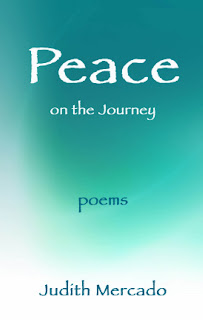
In literature, and in life, older women are often lumped into the crone category, desiccated and asexual. Brazilian author Clarice Lispector says it well in her short story, “Looking for Some Dignity.” “… she was dry, like a dried fig …. In old men she had seen many lecherous eyes. But not in old women. Out of season.”
Lespector then says: “But inside she wasn’t parched. On the contrary. Inside she was like moist gums ... And she was alive, as if she were someone, she who was no one [in old age].” The latter refers to the invisibility that also often comes with age for women. Indeed, Lispector’s short story describes a frustrating succession of efforts by the 70-year-old Mrs. Jorge B. Xavier to free herself from the physical, mental, and emotional labyrinths in which, as an old woman, she finds herself trapped. In the end, she fantasizes about romance with a famous young male singer, but asks herself whether it might “… perhaps be repugnant [for him] to kiss the mouth of an old woman?” Demoralized by that possibility, she declares, “there!—has!—to!—be!—a!—way!—out!”
You might ask why I have included this subject as part of my A Hero’s Journey series in this blog. Ah, you say, a crone who is also sensual has pulled off an amazing feat! For that alone, she could be considered heroic. Perhaps, but I am also writing about the older woman/crone in her capacity as the “main character in a fictional plot,” one of the definitions of the word hero.
I was also motivated to write about this subject after seeing an older woman described as “a woman of a certain age.” I then started to survey short stories, mostly, and discovered that, apart from mythology and fantasy, the older woman/crone as a positive figure is largely absent. The literary landscape is full of dewy ingénues, mothers, virgins, wives, and whores but, as in real life, a woman past her supposed sexual prime tends toward invisibility.
There are some notable exceptions. In Chaucer’s 14th century Canterbury Tales, the bawdy Wife of Bath is unapologetically lusty. But, even she, who has wed five different husbands, acknowledges the repulsion her latest, younger husband feels about her. “You say I’m old and fouler than a fen.” Despite that, with the emotional wisdom perhaps only an older woman could have acquired, she manages to overcome his repugnance.
In Milan Kundera’s “Let the Old Dead Make Room for the Young Dead,” a younger man tries to convince an older woman to make love to him fifteen years after their one-time tryst. She, though, is afraid both of what her son will think (“…the idea that his mother could still have a sex life disgusted him”) and of what her lover will think (“…if he got her to make love it would end in disgust…”)
Here are some other delightful stories which focus on the older woman breaking out of her archetypal confines. In “Sophie and the Angel” by Cuban author Dora Alonso, the 80-year-old and ultra-religious Sophie engages in flirtation, and perhaps more, with a supposed male angel, scandalizing her family and priest. In Costa Rican author Rima Vallbona’s “The Secret World of Grandmama Anacleta,” a nonagenarian grandmother bursts out of her long-time bed confinement and goes bowling because someone gifts her with bowling balls (thereby acknowledging her as a vibrant person). Margaret Atwood’s “Hair Jewelry” is poignant in its description of the conflicted feelings an older woman has when she comes across a former lover from her youth.
The crone in mythology, literature, and real life presents a complex subject worthy of exhaustive academic treatment. This post is obviously not that. It is merely my attempt to redress an historical imbalance by including the older woman/crone in a pantheon of heroes, where I believe she rightfully belongs. I would love to hear from you about any examples you have of the crone/older woman in literature. Actually, I would welcome any insights you have, related or not to literature.
Sources:
Short Stores by Latin American Women: The Magic and the Real, edited by Celia Correas de Zapata
Beyond the Border: A New Age in Latin American Women’s Fiction, edited by Nora Erro-Peralta and Caridad Silva-Nuñez
The Art of the Tale: An International Anthology of Short Stories, edited by Daniel Halpern
The CanterburyTales, translated by Nevill Coghill
Other A Hero’s Journey Posts:









































